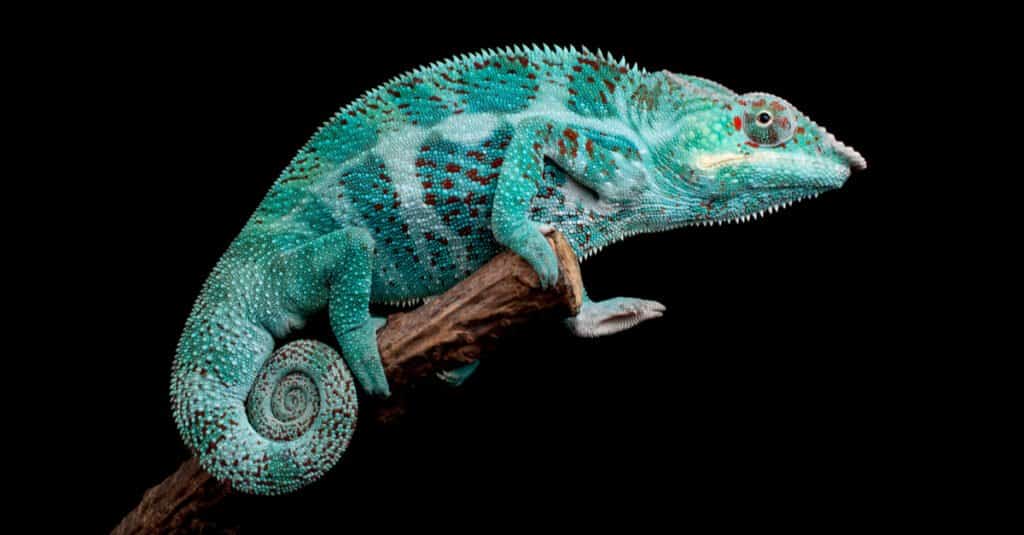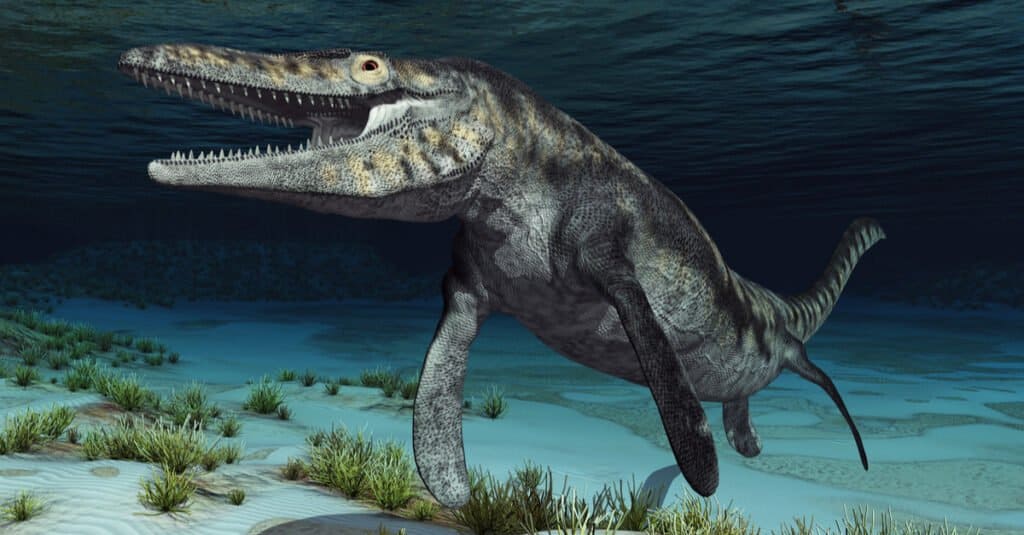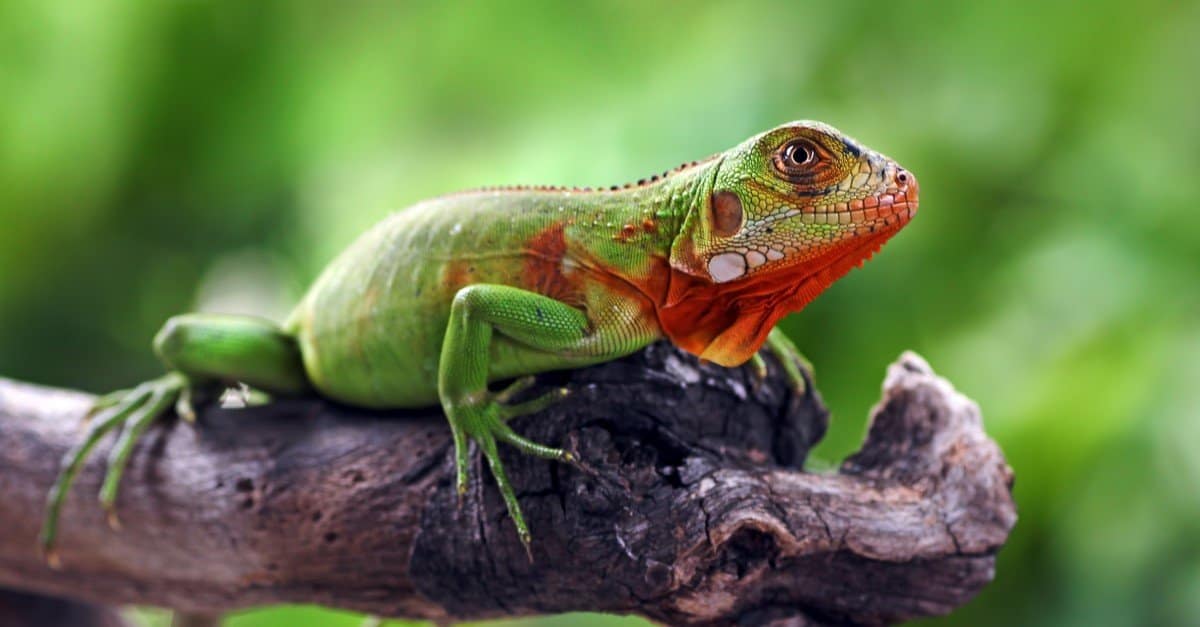There are more than 6,000 species of lizards in the world today and they are found on every continent except Antarctica. They vary vastly in size – from small gecko lizards only a few inches long, to the massive 10 foot long komodo dragon. Most lizards are carnivores and, depending on the species, their prey also varies in size. The smallest lizards eat tiny insects, while komodo dragons can take down massive water buffalo. Therefore, lizards teeth are pretty important, but not every lizard has the same type of teeth. Join us as we explore the two types of lizard teeth and find out what makes them so unique!
The Background on Lizard Teeth
Unlike mammal teeth which are different shapes and sizes to aid chewing, lizards teeth are usually uniform in shape and size (known as homodont). However, their teeth are fairly small in size compared to the size of the lizard. Lizards don’t use their teeth solely for eating though as they also use them to defend themselves against predators. Some male lizards even use their teeth during mating to hold onto the females head or neck.
There are two types of teeth that are found in lizards – acrodont and pleurodont. There are quite a few differences between the two types. Quite often, the type of teeth influences what the lizard eats. Some lizards use their teeth to tear chunks of flesh into smaller pieces, while others use their teeth to grind down coarse food before swallowing it.
Acrodont Teeth

Chameleons have acrodont teeth which are usually sharp and pointy
©Ferdy Timmerman/Shutterstock.com
Acrodont teeth are known as the weakest type of teeth as they are not attached firmly to the jaw bone. Instead of sitting in a socket they are weakly attached to the jaw bone. This means that they are easily lost. Acrodont teeth are not typically replaced during adulthood. However, new teeth can sometimes grow at the rear end of the tooth row as the lizard grows. Additionally, as the teeth are not situated in sockets, when they eventually wear down completely the surface that is used for biting becomes the jaw bone itself.
Acrodont teeth are generally sharp and pointy and used for chewing food. The upper and lower teeth usually fit neatly together as a tight fit. In most cases this creates a sharp shearing edge. The number of teeth generally depends on the individual species of lizard. The diet of lizards with acrodont teeth usually includes leafy greens, grasshoppers, crickets, flies, ants, other small insects, and small mammals. Lizards that have acrodont teeth include chameleons, frilled dragons, and bearded dragons.
Pleurodont Teeth

The teeth of iguanas and other pleurodonts attach to their jawbone.
©Guillermo Guerao Serra/Shutterstock.com
The other type of lizard teeth is pleurodont teeth. Pleurodont teeth have long roots so that they are attached on the cheek side of the jawbone itself. However, they are not fused to it on the tongue side. Instead, they are attached with ligaments. As there is much more of the tooth in contact with the jaw, pleurodont teeth have stronger roots but they still don’t have a strong attachment. In addition, the lower row of teeth usually sits inside the upper row.
The other main difference between the two types is that pleurodont teeth are able to regrow in the same space as the original tooth if one is lost. This means that the teeth can be replaced regularly throughout the lizards life as and when needed. There are two methods of tooth replacement in pleurodont teeth – iguanid and varanid. With the iguanid method of replacement the new tooth pushes through and grows in exactly the same place as the old tooth. However, with the varanid method the new tooth grows behind the original tooth. The varanid method is seen predominantly in lizards from the super family Varanoidea.

Iguanas have pleurodont teeth which are replaced when they are lost
©reptiles4all/Shutterstock.com
The shape of pleurodont teeth varies depending on the species and their diet. For example, lizards that eat a lot of food that needs cracking or crunching have teeth that are flattened rather than pointed. The number of teeth also varies depending on the species. Lizards that have pleurodont teeth include iguanas, geckos, and monitor lizards such as the komodo dragon.
The Exceptions
Some lizards just like to be different and buck the trend by having a mixture of both acrodont and pleurodont teeth in their mouth. Acrodont and pleurodont teeth are generally a different size and shape. Therefore, when this occurs it is described as being heterodont as there is more than one type of tooth in the mouth. For example – us humans are heterodont as we have four different types of teeth (incisors, canines, premolars, and molars). Only a few species of lizards have both acrodont and pleurodont teeth. Examples include some bearded dragons which have four pleurodont teeth at the front of their mouth, giving the appearance of fangs, while the rest of their teeth are acrodont. In this case only the four pleurodont teeth are able to be replaced.
What were Ancient Lizard Teeth like?

Mosasaurs had thecodont teeth which were cemented firmly in the jawbone
©Michael Rosskothen/Shutterstock.com
Lizards have been around for more than 200 million years. Therefore, it’s not surprising that their teeth are a little bit different to the lizards that we know and love today. Some of the best known ancient lizards were the mosasaurs – a group of large marine lizards from the Cretaceous period. Mosasaurs lived in the warm shallows of inland seas and the longest known mosasaur was 56 feet long. They were dominant predators and they had some pretty fearsome teeth. They didn’t have acrodont or pleurodont teeth, but instead had teeth known as thecodont. Thecodont teeth are teeth that have long roots that are cemented deep and firmly in the jawbone. However, these teeth weren’t permanent but instead were constantly shed and replaced. New teeth formed in the roots of the existing teeth and eventually pushed them up and out.
One mosasaur – Xenodons calminechari – had flattened teeth that are typically described as being “saw-like”. Scientists believe that these terrifying teeth were used to “slice and dice”. Their teeth gave the mosasaur the ability to cut away huge swathes of flesh from its prey with one swift bite.
Megalania was the largest land dwelling lizard and lived in Australia during the Pleistocene period. Megalania was a monitor lizard similar to today’s komodo dragon. It’s teeth were curved and serrated and which made them ideal for ripping off chunks of flesh. Megalania was also venomous and preyed on giant marsupials, reptiles, and mammals.
Thank you for reading! Have some feedback for us? Contact the AZ Animals editorial team.








